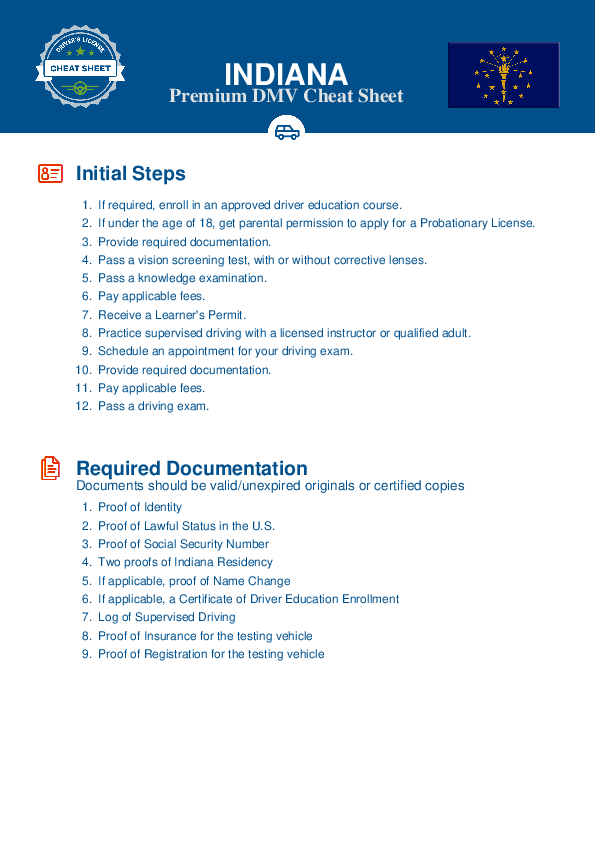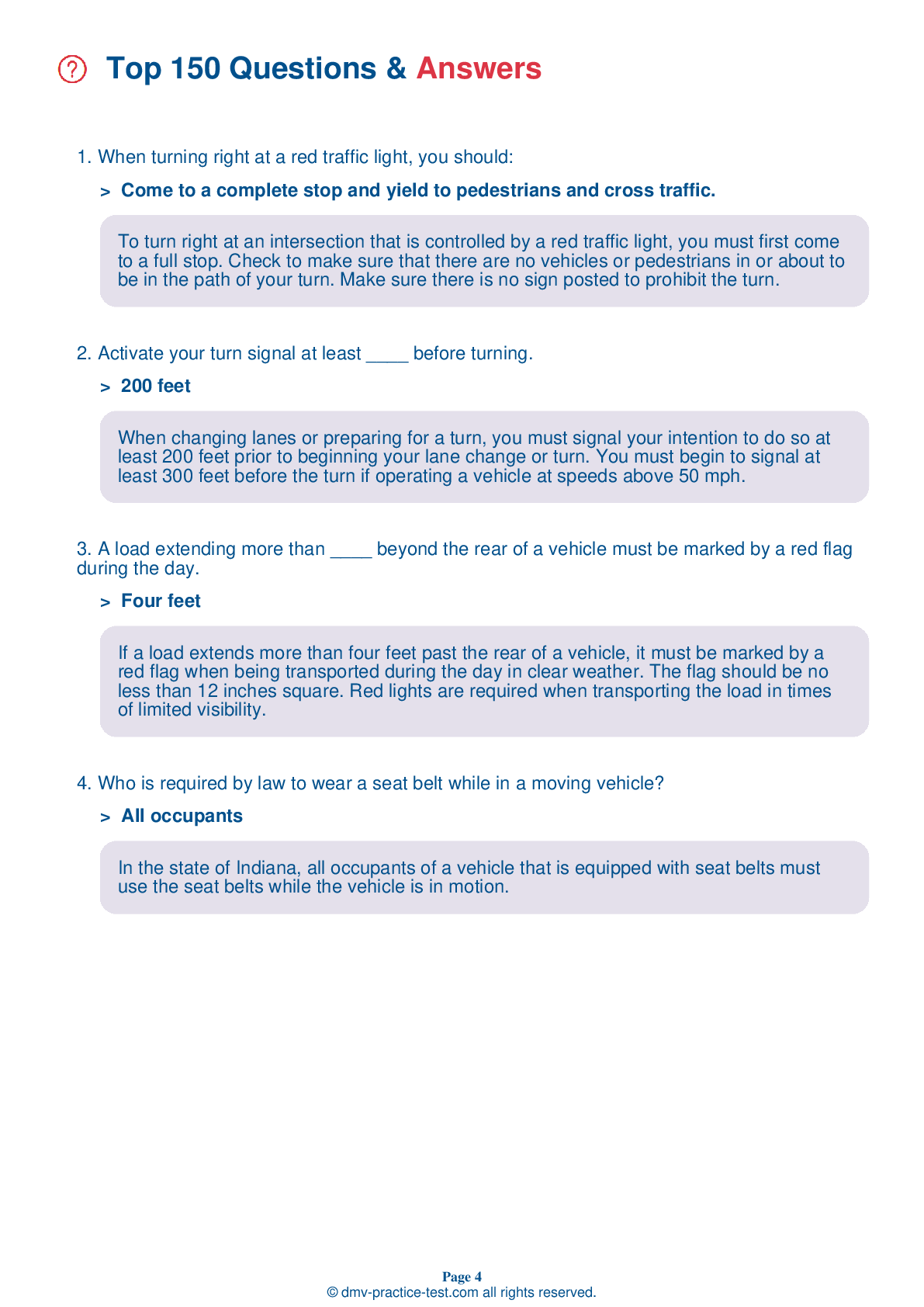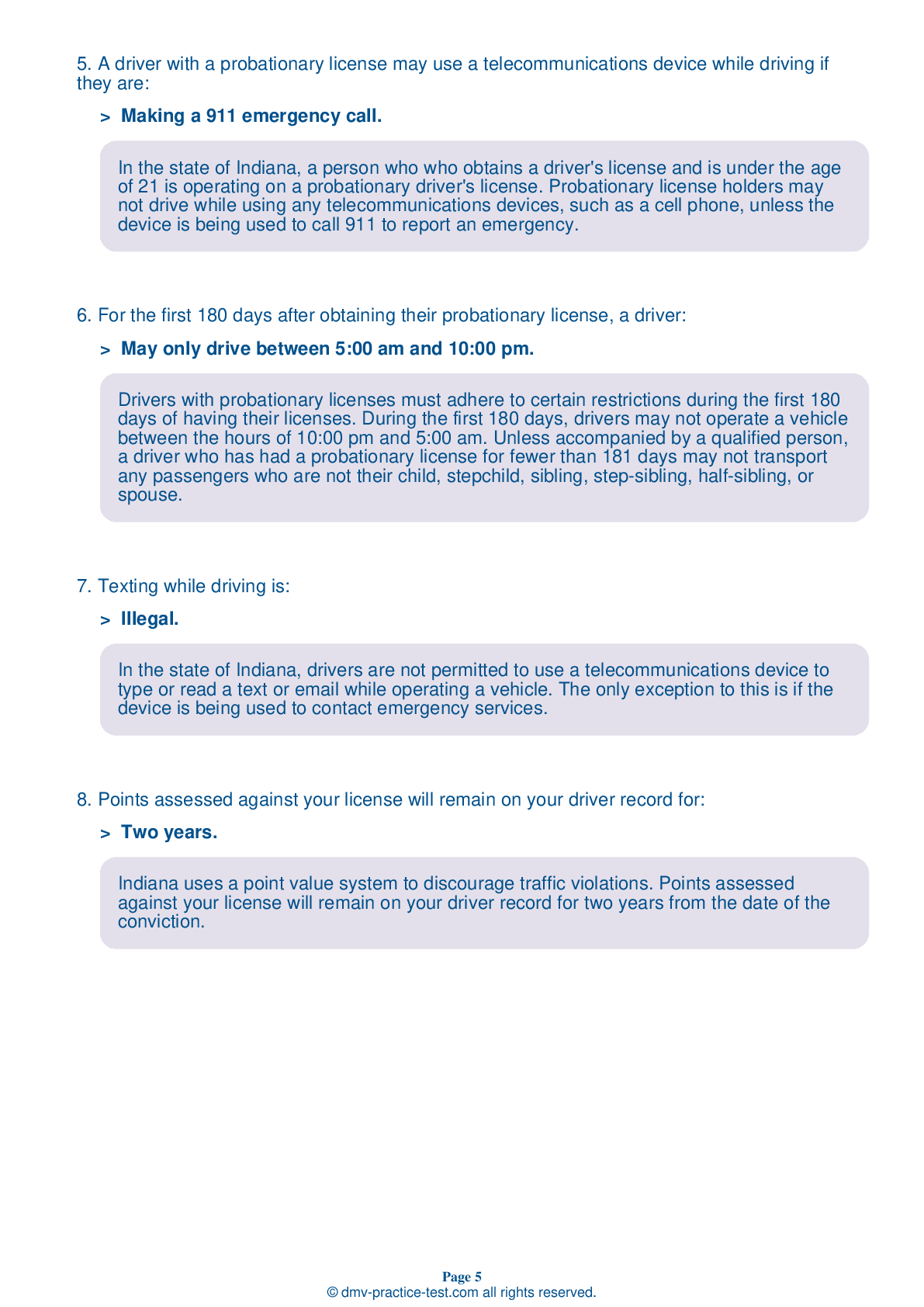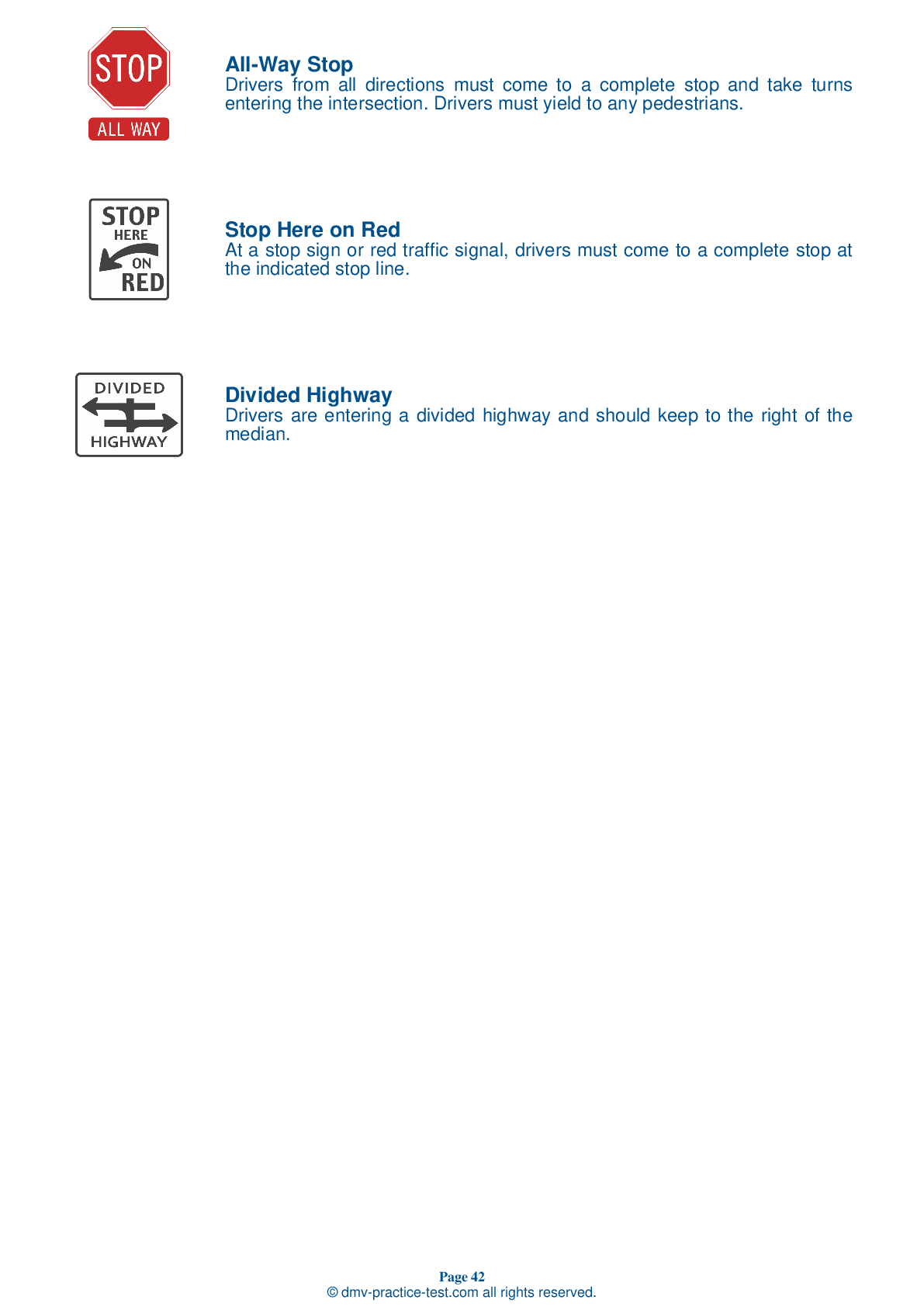FREE Indiana DMV Practice Test #11 Page 4 of 5
This set of Indiana DMV practise tests has been updated for January 2025. It includes questions based on the Indiana Driver Handbook's most significant traffic signals and laws for 2025. Use actual questions that are very similar (often identical!) to the DMV driving permit test and driver's licence exam to study for the DMV driving permit test and driver's licence exam.
On the practise exam, each question gets a tip and explanation to help you remember the concepts. The written component of the official Indiana DMV test will include questions about traffic rules, traffic signs, and driving statutes, as well as information from the Driver Handbook.
To obtain a passing grade, you must correctly answer 44 of the 50 questions. Take our DMV practise exam to help you prepare for your Indiana instruction permit or driver's licence.
The DMV exam is available in several languages.
Using any kind of testing assistance will result in an automatic fail, and the DMV may take additional action against your driver's licence, so stay away from it.
28 . When a traffic signal light turns green, you should:
A green light tells you that you can go through the intersection. However, you must first yield the right-of-way to traffic and pedestrians who are still in the intersection.
29 . You may pass another vehicle:
You may not pass another vehicle on a hill or in a curve because you cannot see oncoming traffic and may cause a collision. Never pass another vehicle by driving onto the shoulder of a highway. Passing another vehicle by driving over a solid yellow line is prohibited.
30 . Always signal when:
Always use the proper turn signal when changing lanes, pulling into or out of a parking space, or pulling into traffic from an alley or parking area. Communicate with other drivers on the road to help prevent accidents.
31 . If you leave your vehicle unattended, you must:
When you leave your vehicle unattended, you must stop the engine, lock the ignition, remove the key from the ignition, and set the parking brake.
32 . This sign means:
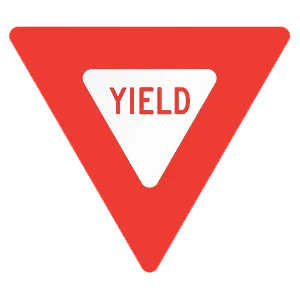
Decrease your speed as you approach an intersection with a yield sign. Prepare to stop and yield the right-of-way to vehicles and pedestrians in the intersection or crossroad. You must come to a full stop at a yield sign if traffic conditions require it.
33 . Compared to driving during the day, driving at night is:
Driving at night is more dangerous than driving during the day for several reasons. It is harder to see in the dark, you may be temporarily blinded by the glare from other vehicles' lights, and there are likely to be more drivers on the road who are tired or under the influence.
34 . This sign means:
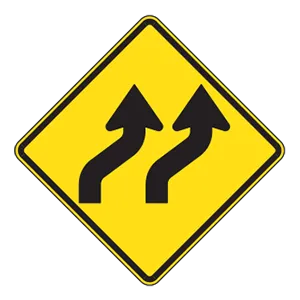
Warning signs prepare drivers for upcoming road conditions and hazards and are usually yellow with black markings. This sign tells drivers to be aware of shifting lanes and to follow the new lane trajectory.
35 . When meeting a car with blinding headlights, you should:
If a vehicle comes toward you with its high beams on, look away from the headlights and toward the right side of the road until the car has passed. This will keep you from being blinded.
36 . A traffic light displaying a green arrow and a red light means that:
If a green arrow is shown with a red light, you can only drive in the direction of the arrow and only if the intersection is clear.
37 . You have the right-of-way when turning left on which of the following traffic signals?
A green steady arrow means you may pass through the intersection in the direction that the arrow is pointing. Oncoming traffic is required to stop for turning traffic.
38 . Safely passing another vehicle requires a driver to:
When changing lanes, be sure that there is no traffic ahead in the lane that you would like to enter. Check your mirrors for any other drivers that are preparing to pass you. Briefly turn your head toward the lane that you are entering to make sure that there is not a vehicle in your blind spot and that there is sufficient room to move into the adjacent lane.
Need Car Insurance? No problem!
Compare the best rates in Indiana and find a personalized policy that meets your needs.
1. Are You Currently insured ?
2. Married ?
3. Do you own your Home?
4. Do you have more than 1 car ?
5. Have you or a Family Member Honorably Served in U.S. Military ?
6. Your Name
7. Age
8. Zip code
IMPORTANT REMINDER:Auto Insurance is Mandatory to drive in Indiana. Get covered before you hit the road to avoid any fines.
Ranked by best match
